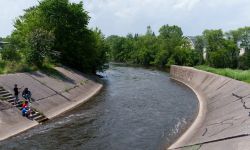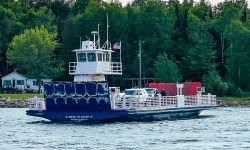Abandoned Michigan cemetery unearths history of segregation — even in death
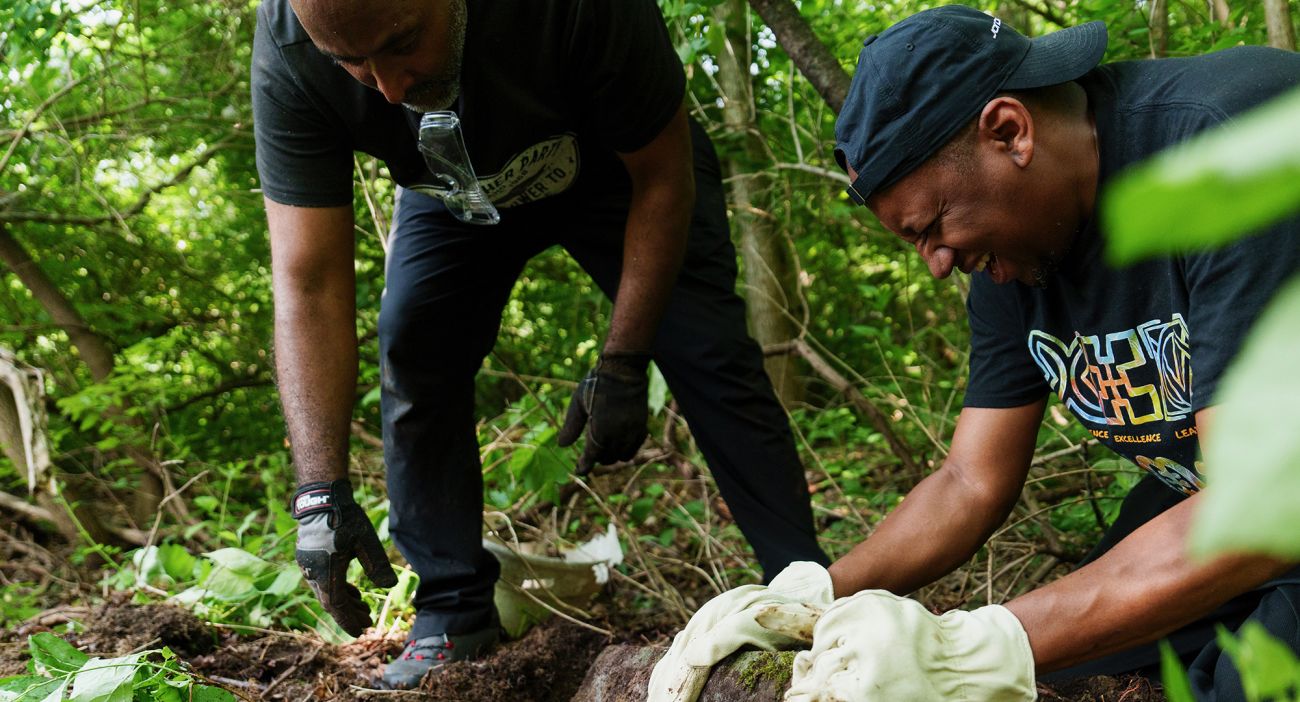
- Volunteers are restoring a historically Black cemetery in Ypsilanti Township
- The cemetery has been abandoned for 60 years
- Descendants say it’s important to see their relatives remembered and honored
YPSILANTI – Historic preservationist Kat Slocum walked across an empty field at the end of a dead-end road, poking a thin, rubber-tipped pole into the scruffy grass and overgrown brush until she hit something hard.
She and volunteers dug carefully around the area until a headstone emerged.
Sophronia Brock
1900-1961
It was the fifth grave marker found on a hot Saturday afternoon at the long-abandoned Woodlawn Cemetery, Washtenaw County’s only documented Black cemetery. Brock’s life story wasn’t immediately clear as volunteers brushed dirt from the tombstone, other than she and the other estimated 150 African-Americans laid to rest here lived at a time when segregation continued even in death.
Now, an effort is underway to restore the Michigan cemetery, where many markers have been obscured by brush and trees. They’ve uncovered about 60 graves so far — and hope to find all by next year.
“It's important to remember our ancestors, and it's important to also remember the difficulties of the past,” Slocum said. “We have to continually learn from our past to ensure that our future is diverse, inclusive and representative of the people that make up our entire community.”


Woodlawn Cemetary was established in 1946 by the Rev. Garther Roberson Sr. of Second Baptist Church, and it was one of very few options for Black people in Washtenaw County to be buried.
After Roberson died in 1955, ownership of the property passed to his wife Estella Roberson and Mrs. Booker Rhonenee. Soon after inheriting the property, the women declared bankruptcy, according to an Ypsilanti Historical Society article, and the cemetery has been abandoned since 1965.
Related:
- Green Book in Michigan: Inside the mission to preserve Black travel sites
- Battle Creek seeks to right history, remove channel that moved Black residents
- Photos: See history of Willow Run, from B-24 bomber and engines to bankruptcy
Now volunteers are working to restore the site, thanks in part to $30,000 Washentaw County will provide over two years to the Historic District Commission. By cutting back the overgrowth — including trees that have sprung up over some parts of the site — volunteers are uncovering the names of those buried there.
“We were seeking a project that we could make a really tangible difference in our community,” said Slocum, the former Historic Preservation Specialist for Washtenaw County.
The work is part of a growing movement to restore abandoned Black cemeteries across the country. Other sites like Woodlawn exist in Illinois, Florida and Maryland, but other abandoned Black cemeteries in Michigan are not well documented. The Detroit Memorial Park Cemetery provided a similar place for African Americans to be buried in Michigan and has been preserved as a historic site.
“We think of discrimination as being a Southern phenomenon, but right here in Washtenaw County, Blacks had a very difficult time finding places that would accept their bodies, or they would be tucked away in the corner in the back,” said Historic District Commissioner Debby Covington, leader of the restoration project.
The restoration project is a collaboration between the African American Cultural and Historical Museum of Washtenaw County, the Historic District Commission and Ypsilanti Township. Covington said the organizations will also be in conversation with the descendants of those buried there to determine what the finished project will look like.

“Oftentimes, Black people are in situations where their stories are told for them, and they don't have the opportunity to tell their own stories,” Covington said. “So we wanted to approach this work with care and consideration of the descendants and people in the Black community.”
About 60 graves have been uncovered so far, including the final resting places of 18 veterans. Some graves are clearly marked, while others are hand-poured concrete slabs with names that family members etched themselves because they couldn’t afford to purchase a stone for their loved ones.
One such slab simply says “Brooks,” with the outline of a heart.
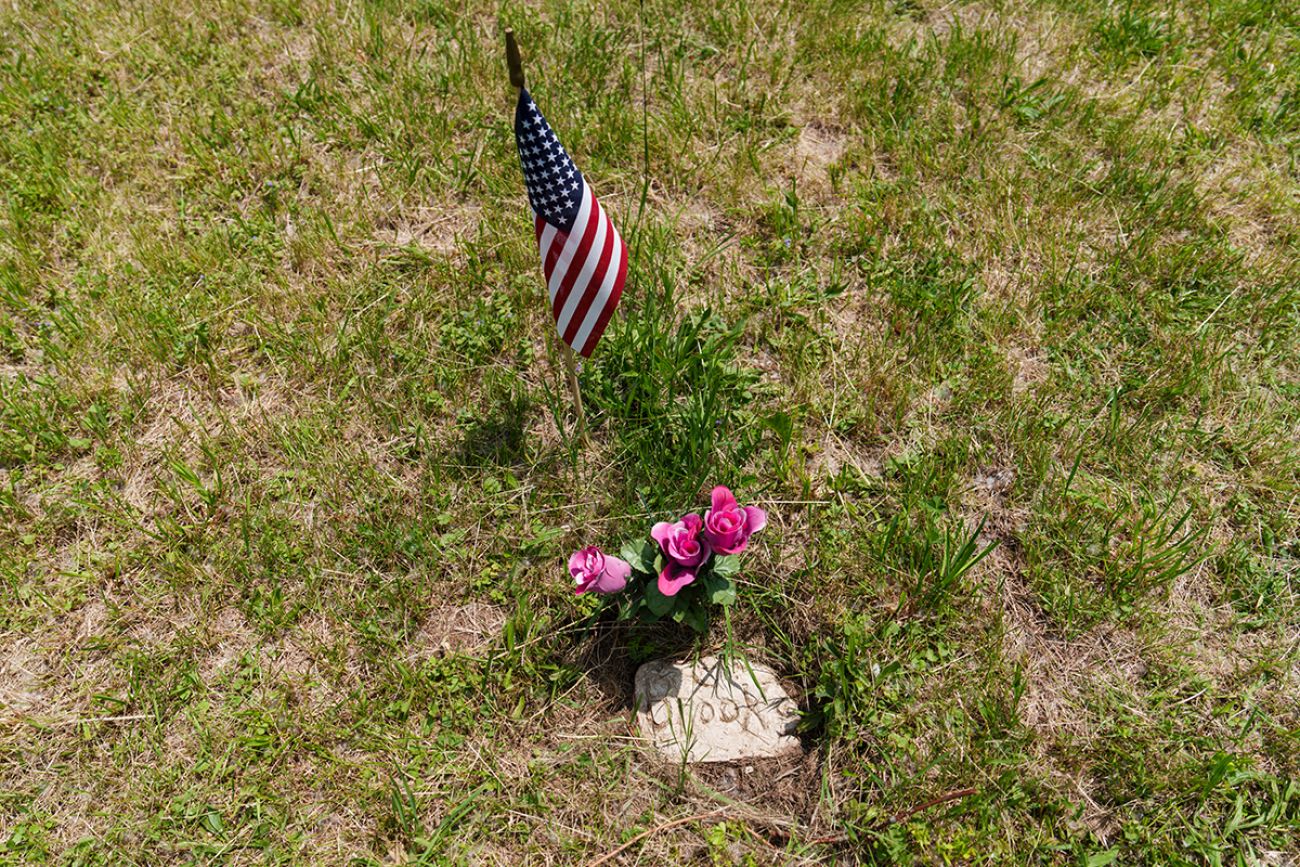
‘It really warms my heart’
Mattie Odessa Smith, 85, was thrilled to see all of the headstones that had been uncovered at the cemetery that her uncle created. Her relatives and numerous family friends are buried there, and as she walked through the cemetery, she said she couldn’t wait until the volunteers uncover her grandmother’s headstone.
“It really warms my heart,” Smith said. “I can’t wait to tell my sister, ‘I think we found my grandmother.’”
Walking over to Roberson’s headstone, Smith said she remembers her uncle fondly as a revered pastor who made a profound impact on the Ypsilanti community, helping newcomers find jobs and advocating for incarcerated individuals.
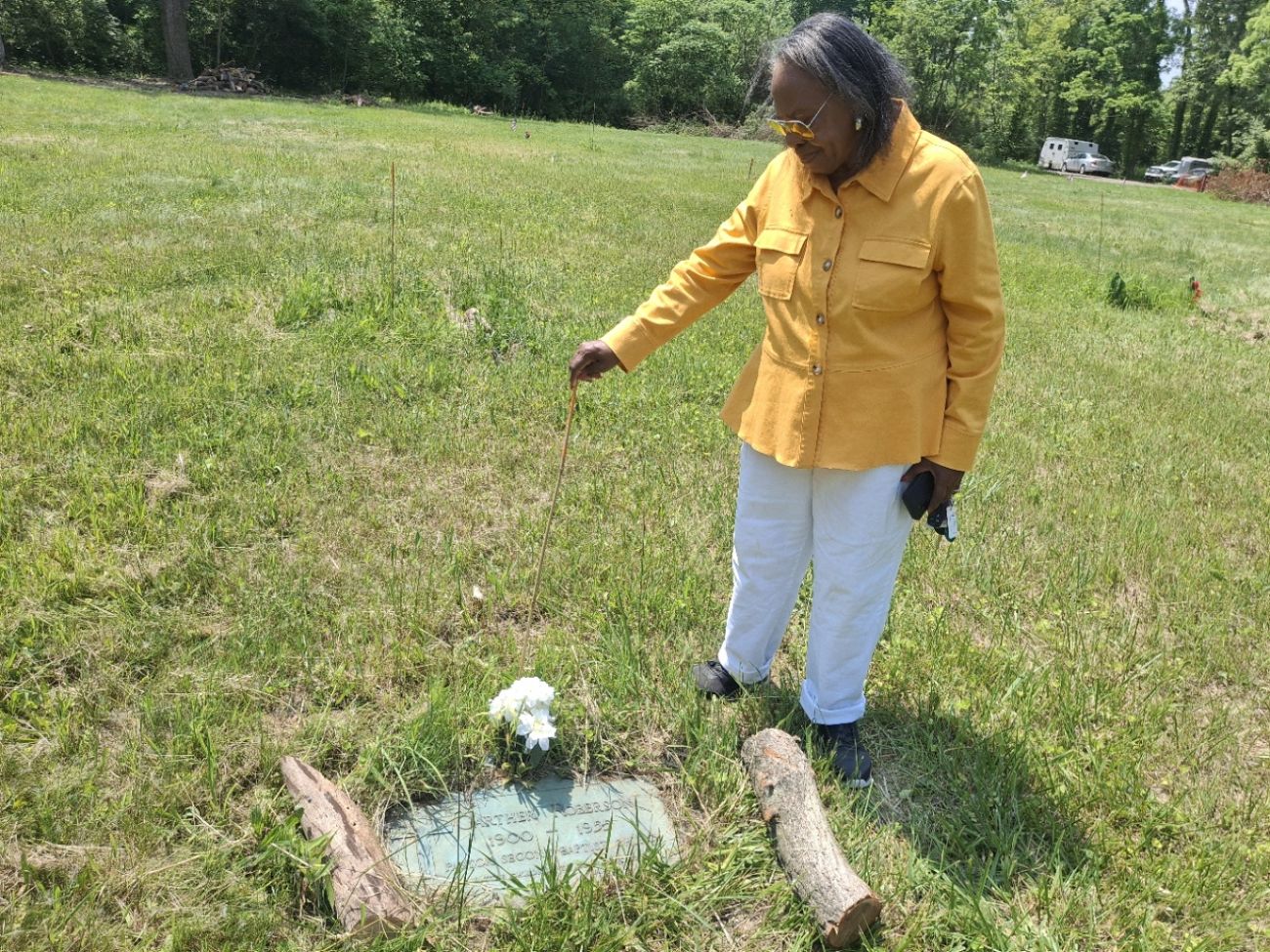
“He was a great person to bring the community together,” she said. “He just always had that big, broad smile, and (was) just always ready to help.”
Estella Holbrook-Brown, Garther Roberson Sr.’s granddaughter, lives in Muskegon but came out on Memorial Day to see one of the volunteer workdays.
“It was overwhelming for me,” Holbrook-Brown said. “Because especially now in a time when a lot of things are being taken away, Native American history, Hispanic history, Black history, and for the community to come out and say, ‘We're going to keep this alive,’ … It was just amazing to see the people working hard and sweating and laughing and talking together. And I'm thinking, ‘This is what our country should be.’”
Former state Rep. Felicia Brabec, D-Ann Arbor, came to a recent work day with her teenage daughter and her daughter’s friends. The first time Brabec came to the cemetery, she cried.
“How alive this space was at one point, and now the opportunity that we have to reclaim it … It felt overwhelming that day, that afternoon, when we were out here,” Brabec said. “I feel like so oftentimes Black history gets lost, and we have an opportunity to uplift it right now.”
Preservation plans
After clearing brush and unearthing some of the headstones, Washtenaw County’s Racial Equity Office is also expected to help pay for a professional landscaping service to remove the bigger trees that have grown over a large portion of the graves.
Then, a non-invasive ground penetrating survey will help pinpoint the remaining graves. The process, which started this May, is currently expected to be completed by next summer.

Slocum, who developed the restoration plan for the site, said beyond the physical preservation of the site, another key aspect of the plan is interviewing descendants to preserve the history of those buried there and ensure they are not forgotten.
“We're hoping to galvanize the descendant community and bring them together for events to understand their history and who their ancestors were” Slocum said. “So we don't just know their name, but we know their story as well.”
The current plan is to clean headstones, replace ones that are irreparably damaged or missing and install a historic marker for the site. Ypsilanti Township has committed to maintaining the site in perpetuity to ensure it doesn’t fall into disrepair again.
“We want to ensure that this site is restored,” Slocum said, “that those individuals that didn't have opportunity in the past for many things have a dignified rest, and that their stories are not forgotten.”
See what new members are saying about why they donated to Bridge Michigan:
- “In order for this information to be accurate and unbiased it must be underwritten by its readers, not by special interests.” - Larry S.
- “Not many other media sources report on the topics Bridge does.” - Susan B.
- “Your journalism is outstanding and rare these days.” - Mark S.
If you want to ensure the future of nonpartisan, nonprofit Michigan journalism, please become a member today. You, too, will be asked why you donated and maybe we'll feature your quote next time!


